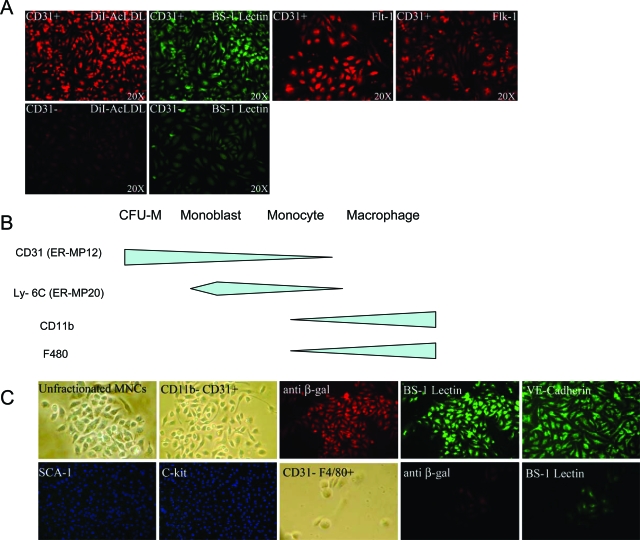Figure 5.
Immature myeloid subpopulations generate CE-EPC with greater efficiency. A: Fluorescence microscopy illustrated that adherent cells generated from CD31+ population obtained from normal mice were positive for uptake of DiI-acLDL, binding of fluorescein isothiocyanate-labeled BS-1 lectin (demonstrated in merge), as well as flt-1 and flk-1, detected by indirect immunofluorescence. Culture of CD31− cells generated adherent cells that failed to endocytose acLDL and were negative for BS-1 lectin staining B: Diagram of antigen expression during murine myeloid differentiation, adopted in part from de Braijn and colleagues.35 C: Representative photomicrographs from cultured cells isolated from Flk1/lacZ transgenic mouse BM-MNCs. Myeloid populations designated in Table 2 were immunomagnetically or flow sorted to purity of >95%, as assessed by flow cytometry, and cultured. Cells were stained after 7 days in culture for β-gal expression to quantify numbers of positive cells and analyzed by immunofluorescence to confirm expression of β-gal transgene and murine endothelial marker, BS-1 lectin. Cells derived from unfractionated MNCs (first panel), CD11b−/CD31+ (panels 2 to 7) and CD31−/F480+ (last 3 panels) cells that consistently generated high or low percentages of lacZ+/BS-1 lectin+ CE-EPCs, respectively, as summarized in Table 2.

